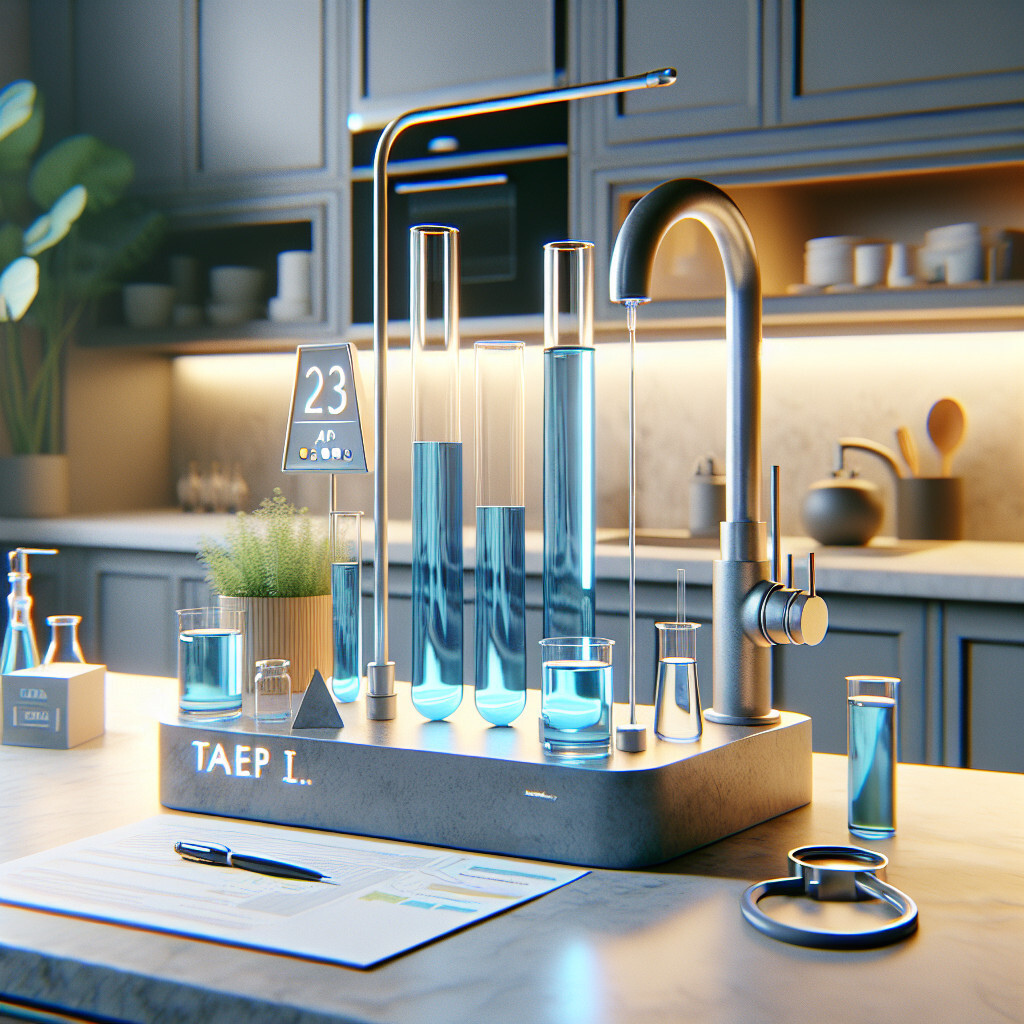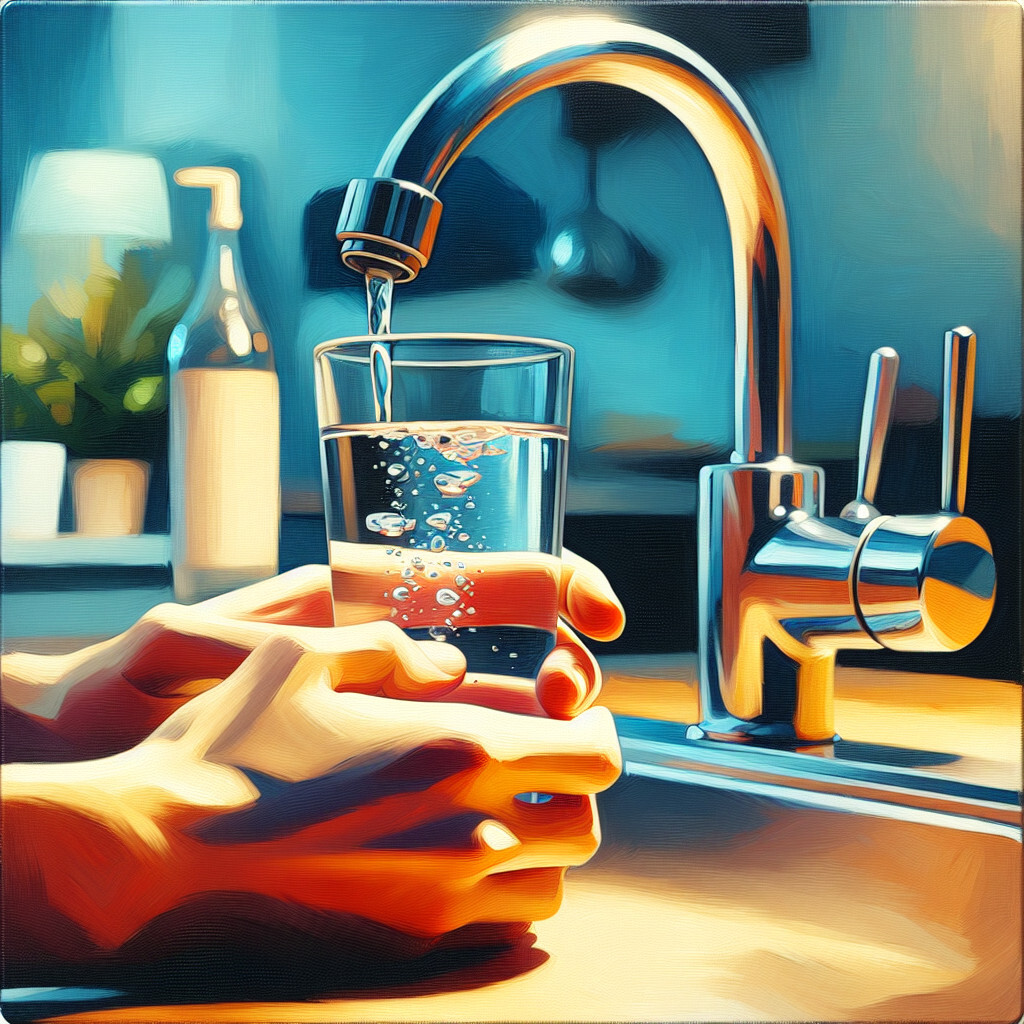-
Table of Contents
“Unveil the Hidden Truth: Test Your Own Tap Water!”
Introduction

Testing your own tap water is a process that allows individuals to assess the quality and safety of the water coming from their faucets. This can be done using various methods, including home testing kits, digital devices, or sending samples to professional laboratories. The purpose of these tests is to detect any potential contaminants such as bacteria, lead, pesticides, or other harmful substances that could pose health risks. It’s an important measure, especially for those living in areas with known water quality issues.
Methods to Test Your Own Tap Water at Home
The quality of tap water is a significant concern for many households. While most municipal water supplies are regulated and treated to ensure they meet certain safety standards, it’s not uncommon for contaminants to find their way into the water supply. This can occur due to a variety of reasons, such as aging infrastructure, industrial pollution, or natural occurrences like heavy rainfall. Therefore, it’s essential to know how to test your own tap water at home to ensure it’s safe for consumption.
One of the most straightforward methods to test your tap water is by using a home water testing kit. These kits are readily available online or at home improvement stores and come with detailed instructions on how to use them. Typically, they include test strips that change color when exposed to certain contaminants. By comparing the color of the test strip to a color chart provided with the kit, you can determine the presence and concentration of various contaminants in your water. These kits can test for a wide range of substances, including lead, bacteria, pesticides, nitrites/nitrates, chlorine, hardness, and pH levels.
Another method to test your tap water is by using a digital water quality tester. These devices are slightly more expensive than test kits but offer more accurate and comprehensive results. They work by measuring the electrical conductivity of the water, which changes based on the number and type of ions present. This allows them to detect a wide range of contaminants, including heavy metals, salts, and chemicals. Some digital testers also measure the water’s temperature and pH level, providing a more complete picture of its quality.
While home testing methods can provide a general idea of your water’s quality, they may not detect all potential contaminants. For a more thorough analysis, you can send a sample of your tap water to a certified laboratory. These labs use advanced equipment and techniques to test for a wide range of contaminants, including those that home testing kits may miss. They can also provide a detailed report of their findings, which can be useful if you need to take action to improve your water’s quality.
Before sending your sample to a lab, it’s important to follow their instructions carefully to ensure accurate results. This usually involves running your tap for a few minutes before collecting the sample to clear out any stagnant water in the pipes. You should also use a clean, sterilized container to collect the sample and seal it tightly to prevent contamination.
In conclusion, testing your own tap water at home is not only possible but also relatively straightforward. Whether you choose to use a home testing kit, a digital water quality tester, or a certified lab, regular testing can provide peace of mind and help ensure your water is safe to drink. However, if your tests consistently show high levels of contaminants, it’s important to contact your local water supplier or a water treatment professional for advice on how to improve your water’s quality.
Understanding the Importance of Testing Your Own Tap Water
The importance of testing your own tap water cannot be overstated. It is a crucial step in ensuring the safety and quality of the water you and your family consume daily. This article aims to provide a comprehensive understanding of why it is essential to test your tap water and how you can do it yourself.
Water is a fundamental necessity for life. We use it for drinking, cooking, bathing, and many other daily activities. However, the quality of water can significantly vary depending on its source and the treatment it undergoes before reaching your tap. While municipal water supplies are generally safe, they can sometimes contain contaminants that pose health risks. These contaminants can range from harmful bacteria and viruses to heavy metals and chemical pollutants. Therefore, testing your tap water becomes a vital measure to ensure its safety.
Testing your tap water allows you to identify any potential contaminants present. This knowledge can help you take appropriate measures to treat the water, ensuring it is safe for consumption and use. For instance, if the test reveals the presence of harmful bacteria, you can opt for disinfection methods like boiling or using water purifiers. If heavy metals are detected, you may need to install specific filters to remove them.
Moreover, testing your tap water can also provide valuable information about its hardness or softness. Hard water, which contains high levels of minerals like calcium and magnesium, can cause scaling in pipes and appliances, leading to their premature failure. On the other hand, soft water, while good for your appliances, may lack essential minerals needed for your health. Therefore, knowing the hardness of your water can help you decide whether you need a water softener or a mineral addition system.
Now, the question arises, can you test your own tap water? The answer is a resounding yes. There are several ways to test your tap water at home. One of the most common methods is using a home water testing kit. These kits are readily available online or at home improvement stores and come with detailed instructions for use. They typically include test strips that change color when dipped in water, depending on the presence and concentration of various contaminants. The color can then be compared with a provided chart to determine the water quality.
Another method is to use a digital water quality tester. These devices provide a more accurate and comprehensive analysis of your water, including its pH level, temperature, and total dissolved solids (TDS) level. However, they are more expensive than testing kits and may require some technical knowledge to operate.
In conclusion, testing your tap water is a crucial step in ensuring its safety and quality. It allows you to identify potential contaminants and take appropriate measures to treat them. With the availability of home testing kits and digital testers, you can easily test your tap water yourself. However, if the test results indicate a serious contamination issue, it is advisable to seek professional help to address it. Remember, safe water is not just about quenching thirst; it’s about safeguarding your health and well-being.
DIY: How to Conduct a Tap Water Quality Test
Water is an essential element of life, and its quality directly impacts our health and wellbeing. Therefore, it is crucial to ensure that the tap water we consume is safe and free from harmful contaminants. While many people rely on their local water supply companies to test and ensure the quality of the water, it is also possible to conduct a tap water quality test at home. This article will guide you through the process of testing your own tap water.
Firstly, it is important to understand what you are testing for. Tap water can contain a variety of contaminants, including bacteria, lead, pesticides, nitrates, and chlorine. Each of these contaminants can have different health effects, so it is essential to test for all of them. Additionally, the pH level of your water can also affect its taste and safety. Ideally, your tap water should have a pH level between 6.5 and 8.5.
To conduct a tap water quality test, you will need a water testing kit. These kits are readily available online or at home improvement stores. They typically include vials for collecting water samples, reagents to react with potential contaminants, and color charts to help you interpret the results. Some kits also include a pH test. When choosing a kit, make sure it tests for all the contaminants mentioned above.
Once you have your kit, the next step is to collect a water sample. It is best to collect the sample from a tap that you use frequently for drinking or cooking. Let the water run for a few minutes before collecting the sample to ensure that you are testing the water that is currently in your pipes. Follow the instructions provided with your kit to collect the sample and add the reagents.
After adding the reagents, you will need to wait for a reaction to occur. This usually takes a few minutes, but it can vary depending on the kit. Once the reaction has occurred, you can compare the color of your sample to the color chart provided with your kit. This will tell you the concentration of each contaminant in your water.
If your test results show that your water contains high levels of contaminants or has a pH level outside the safe range, it is important to take action. You may need to install a water filtration system or use a water treatment product to make your water safe to drink. In some cases, you may need to contact your local water supply company or a professional water testing service for further testing and treatment.
In conclusion, testing your own tap water is a straightforward process that can provide valuable information about the safety of your water supply. By using a water testing kit and following the instructions carefully, you can determine the quality of your tap water and take steps to improve it if necessary. Remember, the quality of your water can have a significant impact on your health, so it is worth taking the time to test it regularly.
The Role of Home Testing Kits in Assessing Tap Water Safety
The safety of tap water is a concern that resonates with many homeowners. While we often trust that the water flowing from our faucets is safe for consumption, the reality is that various factors can compromise its quality. This is where the role of home testing kits in assessing tap water safety comes into play.
Home testing kits are designed to detect a range of contaminants that may be present in tap water. These contaminants can include bacteria, lead, pesticides, nitrates, nitrites, chlorine, hardness, and pH levels. The presence of these substances in your tap water can pose serious health risks, making it crucial to regularly test your water, especially if you notice changes in its taste, color, or smell.
The process of using a home testing kit is relatively straightforward. Most kits come with detailed instructions that guide you through the process of collecting a water sample, applying the necessary reagents, and interpreting the results. The simplicity of these kits allows anyone to conduct a preliminary assessment of their tap water’s safety without needing any specialized knowledge or equipment.
However, while home testing kits provide a convenient way to monitor your tap water’s safety, they are not without limitations. These kits are designed to provide a quick snapshot of your water’s quality, but they may not detect low levels of certain contaminants. Furthermore, they may not be able to identify all types of contaminants, such as certain types of bacteria or heavy metals. Therefore, a home testing kit should not be the sole method of assessing your tap water’s safety.
In addition to using a home testing kit, it is advisable to have your tap water professionally tested at least once a year. Professional water testing laboratories have access to advanced equipment and techniques that can detect a wider range of contaminants at lower levels. They can also provide a more comprehensive analysis of your water’s safety, including recommendations for any necessary treatment.
Moreover, it’s important to remember that the safety of tap water can vary greatly depending on the source. If your water comes from a public water system, it is regularly tested and treated to meet federal safety standards. However, if your water comes from a private well, regular testing is crucial as these sources are not regulated by the Environmental Protection Agency.
In conclusion, home testing kits play a significant role in assessing tap water safety. They provide a convenient and accessible way for homeowners to monitor their water’s quality and detect potential contaminants. However, they should not replace professional testing, which provides a more comprehensive assessment of water safety. By combining the use of home testing kits with regular professional testing, you can ensure that your tap water is safe for you and your family to consume.
Q&A
1. Question: Can I test my own tap water at home?
Answer: Yes, you can test your own tap water at home using a water testing kit which can be purchased online or at a home improvement store.
2. Question: What can a home water test reveal?
Answer: A home water test can reveal contaminants such as bacteria, lead, pesticides, nitrates, nitrites, chlorine, pH levels, and hardness.
3. Question: How often should I test my tap water?
Answer: It’s recommended to test your tap water at least once a year. If you have a private well, it should be tested more frequently.
4. Question: Is it expensive to test tap water?
Answer: The cost can vary depending on the type of test. Basic kits can start from $15-$30, while more comprehensive kits can cost up to $100 or more.
Conclusion
In conclusion, it is possible to test your own tap water. Various home testing kits are available that can detect a range of contaminants such as bacteria, lead, pesticides, nitrates, chlorine, hardness, and pH levels. However, for a comprehensive analysis, it is recommended to send a sample to a certified laboratory.






